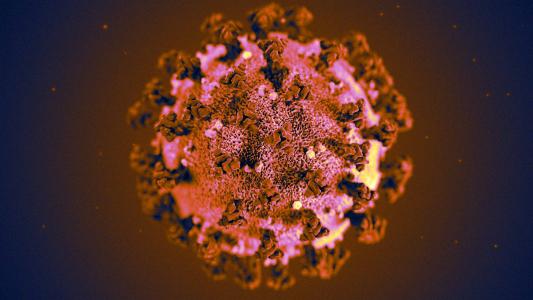Cities all across the globe are shut down and hundreds of millions have been ordered to stay at home, all in an effort to halt the spread of COVID-19, the disease caused by the novel coronavirus that emerged late last year in Wuhan, China.
The reason for the extreme response is both how rapidly the pandemic is spreading and how deadly it appears to be. But almost since the outbreak began, conflicting coronavirus fatality rates for the disease have been appearing in the news.
Here are just a few of the fatality rates reported in journals and scientific bodies for COVID-19:
-
The Lancet: 2.9% in China (January 23)
-
JAMA: 2.3% in China (February 11)
-
Nature Medicine: 1.4% in Wuhan (February 29)
-
The Lancet: “as high as 20%” in Wuhan (March 1)
-
WHO: 3.4% worldwide (March 3)
-
CDC: 0.25–3.0% in various places (March 13)
There are deeper problems with the fatality rates we are using.
Why are there so many different numbers? Why do they keep changing? Just how deadly is COVID-19?
The question is simple, in theory: just count up everyone who got sick and everyone who died. But reality is messy.
Some of these differences in data depend on how old or sick people are. But there are deeper, more serious problems with the fatality rates that governments and the public are using to try to understand the disease.
Coronavirus Fatality Rates Could Be Overstated or Understated
If we just divide total deaths (19,807) by total cases (446,704), as of March 25, we get a worldwide case fatality rate (CFR) of 4.4%.
But there are two big problems with this estimate, both with the denominator (cases) and the numerator (deaths).
First, the case numbers mostly come from tests confirmed by a laboratory, but people who have little or no symptoms are unlikely to seek medical attention, let alone get tested.
This means that the true coronavirus fatality rate is likely to be much lower than it appears, because there are more mild and asymptomatic cases than we are recording. Because testing supplies have been limited throughout the crisis, even symptomatic people have had trouble getting tested. In Wuhan (once the epicenter of the outbreak), doctors still report trouble getting enough tests.
On the other hand, there are problems with the number of deaths, too. A snapshot taken at a single point in time can underestimate the fatality rate because it takes time for people to die. A study of coronavirus patients in China estimated an average of 14 days between the first symptom and death.
This means that, as many new cases are rapidly added to the total, the disease can look less deadly than it would after the epidemic is over. (This is why the fatality rates from SARS, a similar coronavirus disease, actually increased during the 2003 epidemic, from 3% initially to almost 10% by the end.)
These two factors (missing cases and a lag time in deaths) explain most of the contradictory and fluctuating fatality rates reported by the media, medical journals, and health officials. They also probably explain a lot of the differences in death rates across similar countries (such as Germany or Italy).
Fixing the Lag Times
Researchers have tried different ways to account for these problems.
One method is to look at places where the outbreak is nearly over and add in a time-lag for deaths (meaning, compare deaths at one point to case numbers from a couple weeks prior).
A paper published by the CDC on March 13 used this method to estimate the fatality rates in China as a whole, China outside of Hubei province (where Wuhan is located), and on the Diamond Princess cruise ship (which was quarantined for 15 days in a Japanese harbor).
They pegged coronavirus fatality rates in China between 3.35–3.61%, China outside of Hubei between 0.67–0.98%, and on the Diamond Princess between 0.25–1.61%. As a result, the authors concluded, “decision-makers and disease modelers probably should consider a broad range of 0.25%–3.0% for COVID-19 case-fatality risk estimates.”
Finding Missing Cases with the Cruise Ship
Another technique, which tries to address missing or undiagnosed cases, is to look at the outbreak aboard the Diamond Princess, the quarantined cruise liner.
Because the ship was closed off from the rest of the world and most of the passengers and crew were tested, we should have a better idea of how many people were really infected, and we can use this data to estimate how many infections are asymptomatic and might go undetected in the rest of the world.
Because the ship was closed off, we might have a better idea of how many were infected.
A study published in the journal Eurosurveillance on March 12 tried to do just this. They found that roughly half of those who tested positive during the quarantine were asymptomatic at the time of the test.
However, because infections start asymptomatically and then progress to symptoms, the share of patients who stayed asymptomatic throughout their infection was only 16–20%.
A draft paper by a team of researchers in the UK (which is not yet peer-reviewed) attempts to use the cruise ship’s death and infection data to estimate China’s true fatality rate, accounting for undiagnosed cases. Using their model, they estimate China’s real coronavirus fatality rate was about 0.5%, with a range from 0.2–1.2%.
But the cruise ship data is also severely limited. The quarantine was ended after two weeks because people on board kept falling ill, and follow-up data is not available for many patients.
Moreover, the ship saw just six total deaths during the quarantine, which is about 1% of known cases. But it’s hard to draw conclusions from a small sample size like that. In fact, the data in the UK draft study was taken on March 3; four days later, a seventh former passenger died from COVID-19. (Johns Hopkins’ database now also lists an eighth death.)
This throws all of the models based on the ship’s earlier fatality rates into question.
Look Where the Light Is: South Korea’s Mass Testing
Another approach is to look at the countries with the most widespread and thorough testing, because we can be more confident that they are capturing a larger share of their infections.
Another approach is to look at the countries with the most widespread and thorough testing.
Throughout the pandemic, South Korea has been ahead of the game, rapidly scaling up its capacity to test and quarantine the infected. As of March 20, it led the world in total number of tests done — almost twice the number of second place Germany — and it tops the world in tests per person, after Singapore and the UAE.
The data here are more encouraging than some of the worst-case estimates, but it is still grim. As of March 25, South Korea had 9,137 confirmed cases and 126 deaths, giving us a snapshot fatality rate of 1.4%.
Fortunately, South Korea also keeps track of the number of epidemiologically linked cases — the share of infections that were caused by other known infections — so we have a rough sense of how much the virus may be circulating beneath the surface.
According to the Korean CDC, as of March 25, “Epidemiological links have been found for 82.4% of the total cases” (with the rest under investigation or coming from undiagnosed infections). This figure has been climbing, so not many new infections are coming from undiagnosed or unknown cases circulating out in the public.
Fatality Rates Aren’t Fixed: They Depend on What We Do
Fundamentally, there is no such thing as “the” fatality rate for a virus. How likely people are to die from COVID-19 (just like many diseases) depends on whether they can get access to treatment.
There is no such thing as “the” death rate for a virus. It changes based on what we do.
If the medical system is able to provide adequate care — as it mostly has in South Korea, China outside of Hubei, and for cruise ship passengers in Japan — fatality rates will be lower.
But if hospitals and ICUs are suddenly swamped with cases — like in Wuhan and Italy — deaths will rise, even though the virus itself isn’t behaving any differently. Patients who need a ventilator to breathe and don’t get it have a fatality rate of 100%.
This explains some of the vast differences in fatality rates between Wuhan, the epicenter of the outbreak, and the rest of China.
A paper published by the CDC on March 13 estimated that the fatality rate may have reached as high as 12% in Wuhan at the height of the crisis, compared to less than 1% in the rest of China. “The elevated death risk estimates are probably associated with a breakdown of the healthcare system,” the authors suggest. (Though, once again, this doesn’t account for missing cases in Wuhan.)
This isn’t just a novel theory about what might happen in this pandemic — this is always how it works. Existing research on swamped ERs in the US shows that reducing the number of emergency patients into a hospital increases everyone’s average survival rates. We should expect that to apply even more so when crowding is pushed beyond its normal levels.
Reducing the number of patients going into a crowded ER raises everyone’s survival rates.
Exactly how high the fatality rate could go if the healthcare system is overwhelmed depends on the rate of severe or critical cases that require hospitalization to survive.
Singapore, which has done even more testing per person than South Korea, has only seen two deaths so far, a fatality rate of just 0.4%. But according to the National Centre for Infectious Diseases, 15% of known cases in Singapore are currently being kept alive on ventilators, and two patients are now on ecmo machines (a dialysis-like machine that oxygenates blood outside the body because the lungs aren’t working anymore).
The largest study of COVID-19 patients in China, published in JAMA, found that 14% of known cases were “severe” (serious pneumonia, labored breathing, blood oxygen ≤93%) and 5% were “critical” (respiratory failure, septic shock, or multiple organ failure).
Based on this data, many modelers have been using a 20% rate for hospitalization, but this figure has the same problem as the fatality rates: we don’t know how many cases are missing from the denominator. If only 16-20% of cases are asymptomatic, as on the cruise ship, it’s probably only off by a little bit. If 90% of cases went undetected in China, the hospitalization rate could be off by an order of magnitude — closer to 2% than 20%.
The Bottom Line: They Can’t All Be Right
If you aren’t ready to tear your hair out yet, here’s a final point: even after all is said and done, we still might not know the true fatality rate. Scientific papers are not guaranteed to converge on the truth, and the flurry of studies about the coronavirus pandemic so far often rely on contradictory assumptions.
Studies about the pandemic can often rely on contradictory assumptions.
For instance, a draft paper by Alexander Lachmann of the Icahn School of Medicine tries to model the true number of coronavirus infections in China based on the (presumably more reliable) data from South Korea. Using this model, Lachmann estimates there were actually 702,000 cases in China, nearly nine times as many as officially recorded.
Though he doesn’t do the calculation himself, that would imply a fatality rate in China of 0.46% — on the lower end of estimates, to be sure.
But this estimate rests on a few assumptions, including the assumption that “the probability of infection is uniformly distributed … The probability of an 80-year-old person to become infected is equal to the probability of a 30-year-old to become infected.”
But a different model published in Nature Medicine, based on the infection rates of travelers leaving Wuhan, says just the opposite, arguing that “susceptibility to symptomatic infection … increase(s) substantially with age.” That paper suggests that people over age 60 are nearly three times as susceptible to symptomatic infection as people under age 20.
The Nature model concludes that the symptomatic case fatality rate in Wuhan was actually 1.4%, implying about three times as many symptomatic infections as were officially recorded in the city.
Still another paper published in Science estimated that “86% of all infections were undocumented…prior to 23 January 2020 travel restrictions.”
If this estimate is right, documented fatality and hospitalization rates in China would appear to be about six times too high.
What all of these papers do have in common is that none of them are based on direct empirical evidence. They are all models, based on data that may itself be unreliable.
A paper from researchers in China, published March 5, estimated a “false-positive rate of positive results over 47%” for asymptomatic people who were tested in China — suggesting that even small errors in test accuracy could lead to a large share of false positives when lots of uninfected people are tested.
If this is true, many apparently “asymptomatic” cases could be illusions (though doctors will often test people multiple times before confirming a coronavirus diagnosis).
With a reliable antibody test, we could find out how many people have ever had the virus.
There is only one way that we might be able to settle these debates, which is through serology testing to look for antibodies against the virus. With a reliable antibody test, we could test a random sample of the population and find out how many people have ever had the virus, even if they’ve recovered and the virus is gone now. This would give us an estimate of cases for the denominator.
Unfortunately, while there’s been some talk about serologic tests — Singapore has been relying on one for its testing, China also claims to have one, and the CDC says it’s working on it — there have been no systematic attempts to study the whole population, as yet.
The Netherlands is currently testing blood donations for coronavirus antibodies, as well as doing some random testing of patients with flu-like symptoms around the country, but so far this has uncovered few undetected COVID-19 cases, according to the Dutch National Institute for Health.
Hopefully, with more widespread antibody testing across many countries, the puzzle of how many people have gotten the coronavirus — and therefore how deadly it really is — can be solved. But whether those answers will come soon enough to inform public policy remains to be seen.
Update: This piece has been updated to clarify the relative rankings of the city-state of Singapore and the nations of South Korea and the UAE.






